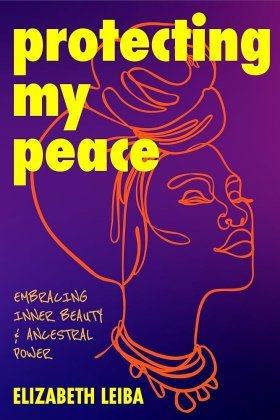8.Beauboeuf-Lafontant, Tamara, 2007. “You Have To Show Strength,” Gender & Society (21), 1:28–51. doi.org/10.1177/0891243206294108.
9.“Equal Pay Day: March 14, 2023.” 2023. US Census Bureau. www.census.gov/newsroom/stories/equal-pay-day.html.
10.Michener, Jamila and Margaret Brower, 2020. “What’s Policy Got To Do With It? Race, Gender & Economic Inequality In the United States,” Daedalus (149), 1:100–118. doi.org/10.1162/daed_a_01776.
11.Ellis, Terry. 2022. “ ’Very rarely is it as good as it seems’: Black women in leadership are finding themselves on the ‘glass cliff.’ ” CNN. www.cnn.com/2022/12/17/us/black-women-glass-cliff-reaj/index.html.
12.“Working Together to Reduce Black Maternal Mortality | Health Equity Features.” 2023. CDC. www.cdc.gov/healthequity/features/maternal-mortality/index.html.
13.Goff, Phillip Atiba, Matthew O. Jackson, Brooke A. L. Di Leone, Carmen M. Culotta, and Natalie Ann DiTomasso, 2014. “The Essence Of Innocence: Consequences Of Dehumanizing Black Children.” Journal of Personality and Social Psychology (106), 4:526–545. doi.org/10.1037/a0035663.
14.“The power of us: Black women deciding elections.” 2022. League of Women Voters. www.lwv.org/newsroom/news-clips/power-us-black-women-deciding-elections.
15.Tensley, Brandon. 2021. “Black voting rights and voter suppression: A timeline.” CNN. www.cnn.com/interactive/2021/05/politics/black-voting-rights-suppression-timeline/.
16.Homan, Patricia and Tyson H. Brown, 2022. “Sick and Tired Of Being Excluded: Structural Racism In Disenfranchisement As A Threat To Population Health Equity,” Health Affairs (41), 2:219–227. doi.org/10.1377/hlthaff.2021.01414.
17.Nash, Jennifer C.. Black Feminism Reimagined: After Intersectionality, New York, USA: Duke University Press, 2019. https://doi.org/10.1515/9781478002253.
18.Romero, R. E. (2000). The icon of the strong Black woman: The paradox of strength. In L. C. Jackson & B. Greene (Eds.), Psychotherapy with African American women: Innovations in psychodynamic perspective and practice (pp. 225–238). The Guilford Press.
19.Woods-Giscombé, Cheryl L. “Superwoman schema: African American women’s views on stress, strength, and health.” Qualitative health research 20, no. 5 (2010): 668–683.
20.Settles, Isis H., Jennifer S. Pratt-Hyatt, and NiCole T. Buchanan. “Through the lens of race: Black and White women’s perceptions of womanhood.” Psychology of Women Quarterly 32, no. 4 (2008): 454–468.
21.Stanton, Alexis G., Morgan C. Jerald, L. Monique Ward, and Lanice R. Avery. “Social media contributions to strong Black woman ideal endorsement and Black women’s mental health.” Psychology of Women Quarterly 41, no. 4 (2017): 465–478.
22.Abrams, Jasmine A., Morgan Maxwell, Michell Pope, and Faye Z. Belgrave. “Carrying the world with the grace of a lady and the grit of a warrior: Deepening our understanding of the ‘Strong Black Woman’ schema.” Psychology of Women Quarterly 38, no. 4 (2014): 503–518.
23.Harrington, Ellen F., Janis H. Crowther, and Jillian C. Shipherd. “Trauma, binge eating, and the ‘strong Black woman.’ ” Journal of consulting and clinical psychology 78, no. 4 (2010): 469.
24.Abrams, et al., “Carrying the world with the grace of a lady and the grit of a warrior: Deepening our understanding of the “Strong Black Woman” schema.”
25.Harrington, et al., “Trauma, binge eating, and the “strong Black woman.”
26.West, Lindsey M., Roxanne A. Donovan, and Amanda R. Daniel. “The price of strength: Black college women’s perspectives on the strong Black woman stereotype.” Women & Therapy 39, no. 3–4 (2016): 390–412.
27.Collins, Patricia Hill. Black sexual politics: African Americans, gender, and the new racism. Routledge, 2004.
28.Woods-Giscombé CL. Superwoman schema: African American women’s views on stress, strength, and health. Qual Health Res. 2010 May;20(5):668-83. doi: 10.1177/1049732310361892. Epub 2010 Feb 12. PMID: 20154298; PMCID: PMC3072704.
29.Collins, Patricia Hill. Black feminist thought: Knowledge, consciousness, and the politics of empowerment. Routledge, 2009.
30.“Trends in US corrections.” Fact Sheet, The Sentencing Project. Washington, DC (2020).
31.Romero, 2000.
32.Beauboeuf-Lafontant, Tamara. “Keeping up appearances, getting fed up: The embodiment of strength among African American women.” Meridians: feminism, race, transnationalism 5, no. 2 (2005): 104–123.
33.Collins, 2009.
34.Nelson, Tamara, Esteban V. Cardemil, and Camille T. Adeoye. “Rethinking strength: Black women’s perceptions of the “Strong Black Woman” role.” Psychology of women quarterly 40, no. 4 (2016): 551–563.
35.Woods-Giscombé, 2010.
36.Speight, Suzette L., Denise A. Isom, and Anita Jones Thomas, ‘ From Hottentot to Superwoman: Issues of Identity and Mental Health for African American Women’, in Elizabeth Nutt Williams, and Carolyn Zerbe Enns (eds), The Oxford Handbook of Feminist Multicultural Counseling Psychology, Oxford Library of Psychology (2012; online edn, Oxford Academic, 21 Nov. 2012), https://doi.org/10.1093/oxfordhb/9780199744220.013.0006.
37.Collins, 2009.
38.Dow, Dawn Marie. “Negotiating ‘the welfare queen’ and ‘the strong Black woman’ African American middle-class mothers’ work and family perspectives.” Sociological Perspectives 58, no. 1 (2015): 36–55.
39.Collins, 2000.
40.Blackwell, Debra L., Jacqueline W. Lucas, and Tainya C. Clarke. “Summary health statistics for US adults: national health interview survey, 2012.” Vital and health statistics. Series 10, Data from the National Health Survey 260 (2014): 1–161.
41.Woods-Giscombé, 2010.
42.Donovan, Roxanne A., and Lindsey M. West. “Stress and mental health: Moderating role of the strong Black woman stereotype.” Journal of Black Psychology 41, no. 4 (2015): 384–396.
43.Clark, Rodney, Norman H. Anderson, Vernessa R. Clark, and David R. Williams, 1999. “Racism As a Stressor For African Americans: A Biopsychosocial Model.” American Psychologist (54), 10:805–816. doi.org/10.1037/0003-066x.54.10.805.
44.Chau, Anson C.M., Suzanne Ho-wai So, Xiaoqi Sun, Chen Zhu, Chui-De Chiu, Raymond C.K. Chan, and Patrick S.C. Leung, 2022. “The Co-occurrence Of Multidimensional Loneliness With Depression, Social Anxiety and Paranoia In Non-clinical Young Adults: A Latent Profile Analysis,” Frontiers in Psychiatry (13). doi.org/10.3389/fpsyt.2022.931558.
45.Woodfin, Vivian, Per-Einar Binder, and Helge Molde, 2020. “The Psychometric Properties Of the Frost Multidimensional Perfectionism Scale—Brief,” Frontiers in Psychology (11). doi.org/10.3389/fpsyg.2020.01860.
46.Liao, Kelly Yu-Hsin, Meifen Wei, and Mengxi Yin, 2019. “The Misunderstood Schema Of the Strong Black Woman: Exploring Its Mental Health Consequences And Coping Responses Among African American Women,” Psychology of Women Quarterly (44), 1:84–104. doi.org/10.1177/0361684319883198.
47.Williams, David R. and Selina A. Mohammed, 2008. “Discrimination and Racial Disparities In Health: Evidence And Needed Research,” Journal of Behavioral Medicine (32), 1:20–47. doi.org/10.1007/s10865-008-9185-0.

























